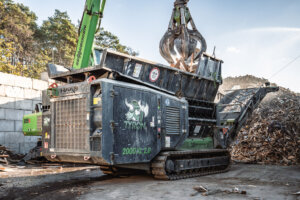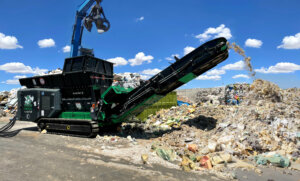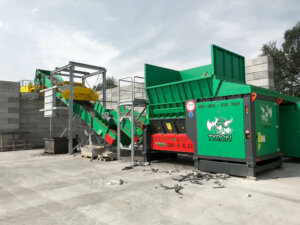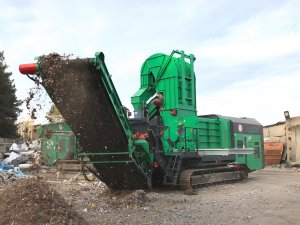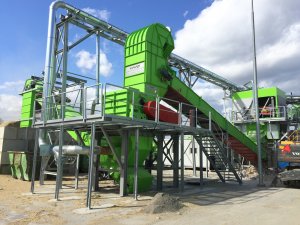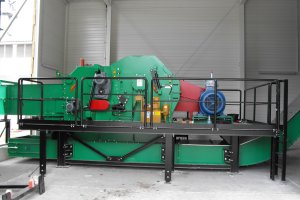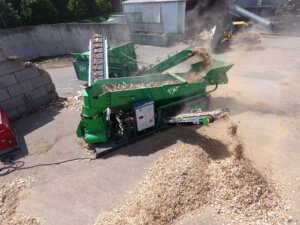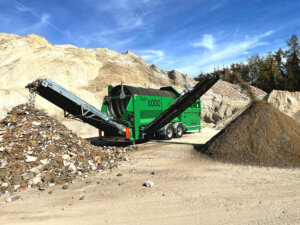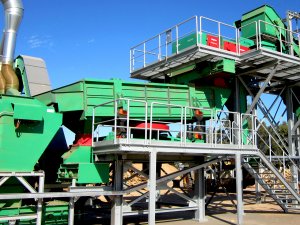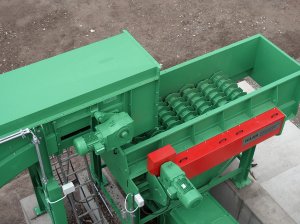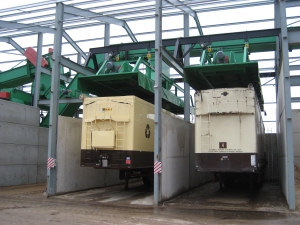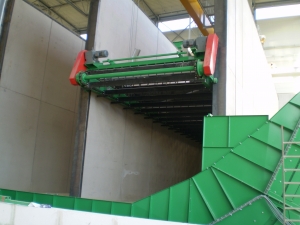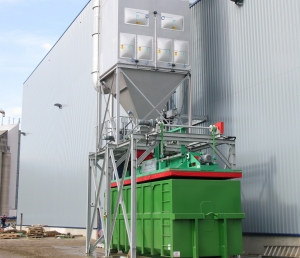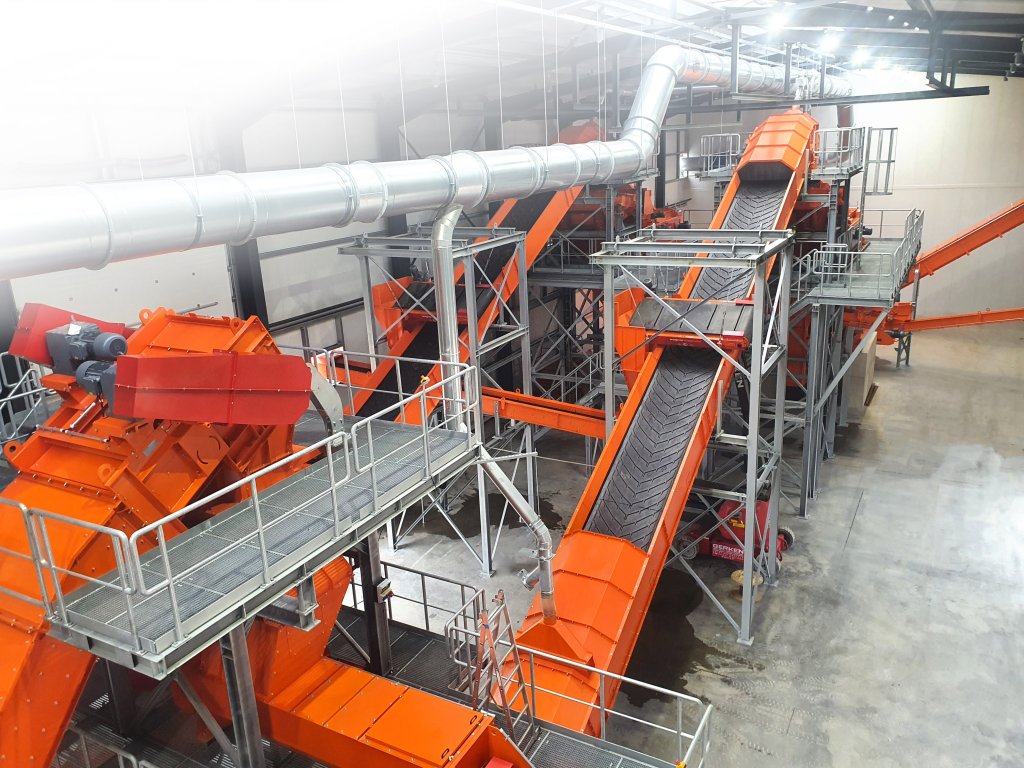AVG Baustoffe Goch was faced with the challenge of having to process 300,000 tonnes of waste wood per year according to precisely defined biofuel specifications. AVG has been using a stationary HAAS waste wood processing system at its Goch site for many years. Another benefit that led to the decision in favour of a HAAS plant is a HAAS waste wood plant that has already been installed since 2017 and produces the fuel for an identical biomass power plant in the UK.
The plant must process at least 60 t of waste wood per hour in order to cover the power plant‘s demand. To achieve the optimum efficiency of the CHP boiler, clean wood chips without any impurities are required.
A TYRON 2500-E, the largest HAAS primary shredder, pre-shreds the waste wood of classes A I to A IV first. The hammermill, ARTHOS 2000-E, processes the pre-shredded wood into recycled chips smaller than 100 mm.
The special ballistic chute of the hammermill protects against wear and machine breakage. Impurities, especially iron, are automatically separated. If necessary, the mill can be opened hydraulically in a flash and the wear parts and screen basket can be replaced within a very short period of time. This minimises downtimes and reduces costs.
For optimally cleaned and screened waste wood chips, the material flow is distributed over two lines. Material diverters and distribution screws guarantee a reliable processing process. Impurities such as nails, screws or staples are removed from the waste wood by powerful neodymium magnetic separators, magnetic drums and non-ferrous separators.
The cleaned biofuel is finally separated into three fractions with HAAS flat screens. The usable
fraction is fed into the power plant‘s storage silo, the fine fraction is separated and the oversize is fed back into the process. This is where the process chain ends.
A dust extraction system consisting of a filter unit with a suction capacity of 40,000 m³ air per hour keeps the plant almost dust-free.
The Rheinberger Solvay plant produces soda and sodium bicarbonate. Products from Rheinberg are used for example for glass, solar panels, laundry detergents and baking powder. Solvay is rarely mentioned anywhere, but it‘s in almost everything!
The Solvay plant in Rheinberg significantly reduces CO2 emissions by around 190,000 tonnes per year. To achieve this goal, Solvay Chemicals is building a power plant to generate process steam and electricity using waste wood as fuel. Each year around 300,000 tonnes of waste wood will be used to generate energy in the power plant.
Within a radius of 150 km certified disposal companies collect the waste wood and supply it to the power plant. AVG Baustoffe Goch GmbH is responsible for processing the waste wood into high-quality biofuel.

